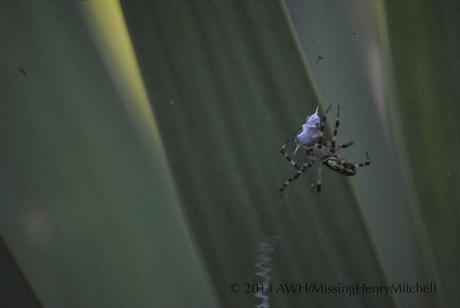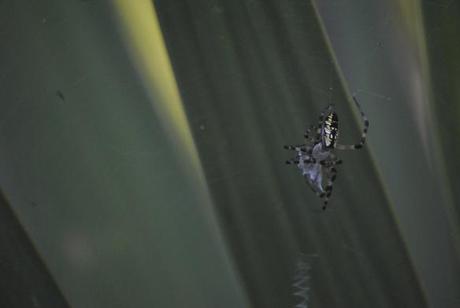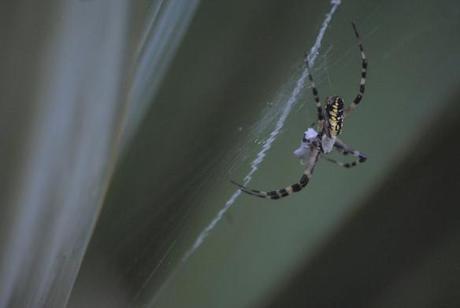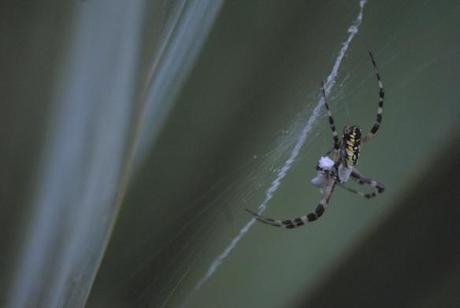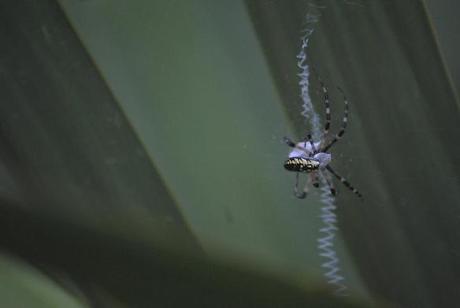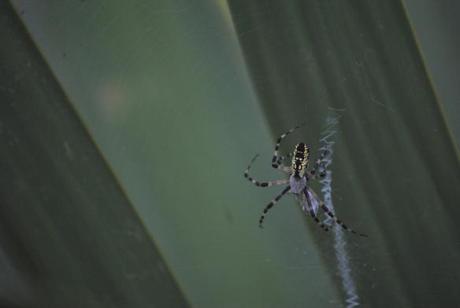The other morning, I noticed a large spider in a yucca plant near the road in my blue slope garden. Yesterday afternoon, I nipped out to see if it was still there.
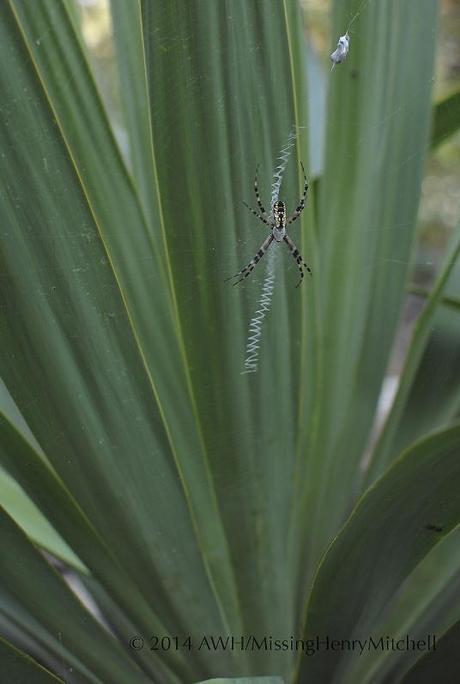
The black and yellow argiope (Argiope aurantia)
The black-and-yellow argiope (Argiope aurantia) is fairly common throughout the US and Canada. It lives in shrubs and tall plants in meadows and gardens, and eats the small flying insects it catches in its web, which may be up to 2 feet in diameter.
This is a female spider. Like most of her species, she spends her time hanging head-down in the middle of her web. I haven’t yet found an egg sac, but I shall keep looking. It will be a half-inch to an inch in size, coated in a brown papery covering, looking a bit like a fat acorn. The eggs hatch in autumn, but the young overwinter in the sac and disperse in the spring.
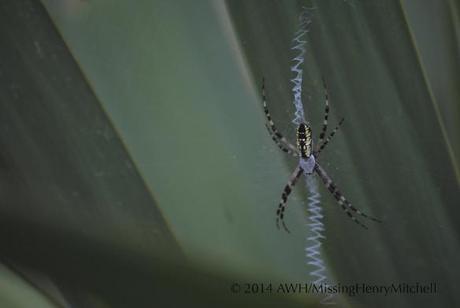
The zigzag pattern in the web is known as a stabilimentum, but its purpose is of some debate. These spiders eat and rebuild their webs every day, except during periods of molting and egg-laying.
I watched her for perhaps five minutes, during which time she seemed to feel peckish. She turned around and began climbing towards the bundle she’d wound up earlier.
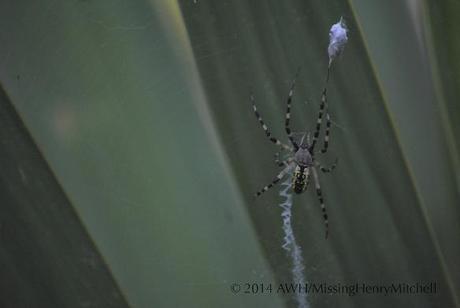

The short, light-brown leggy structures with which she seems to be holding the prey are called pedipalps. Although they look like legs, they function more as antennae. She uses her pedipalps just as it appears, to hold the prey steady and guide it to her mouth.
She wrapped herself around it, perhaps taking a sip in the process, and then moved her dish to another spot on her web.
